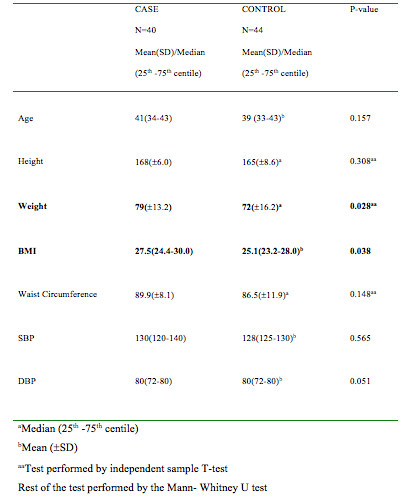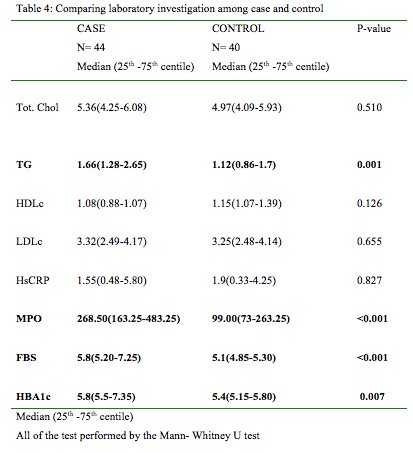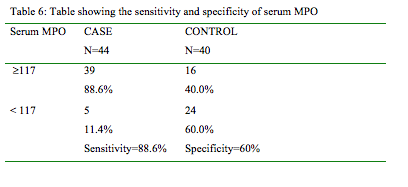Lots of interesting abstracts and cases were submitted for TCTAP & AP VALVES 2020 Virtual. Below are accepted ones after thoroughly reviewed by our official reviewers. Don¡¯t miss the opportunity to explore your knowledge and interact with authors as well as virtual participants by sharing your opinion!
* The E-Science Station is well-optimized for PC.
We highly recommend you use a desktop computer or laptop to browse E-posters.
ABS20191101_0014
| Basic Science, Animal Models and Preclinical Studies | |
| Association of Myeloperoxidase Level and Risks of Coronary Artery Disease in Young Malaysian Patients | |
| Shawal Faizal Mohamad1, Patrick WJ Tiau2, Hamat Hamdi Che Hassan1, Oteh Maskon3 | |
| Hospital Canselor Tuanku Muhriz UKM, Malaysia1, Sunway Medical Centre, Malaysia2, An-Nur Specialist Hospital, Malaysia3 | |
|
Background:
Myeloperoxidase (MPO), an abundant enzyme secreted from activated neutrophils, monocytes and certain tissue macrophages. MPO appears to promote numerous pathological events in atherogenesis and may contribute directly in the pathogenesis atherosclerotic plaques. Recent studies demonstrated the presence of MPO in human atherosclerotic lesions, and has been proposed as a potential independently inflammatory marker in coronary artery disease (CAD)
|
|
|
Methods:
Case-controls study conducted from August 2012 to September 2013 in Universiti Kebangsaan Malaysia Medical Centre, comprising 44 patients with established CAD (cases) and 40 patients without angiographically significant CAD (controls). Biochemical analysis approach; Enzyme-linked Immunosorbent Assays (ELISA) was used to determine the association of MPO levels with CAD risk in young patients.
|
|
|
Results:
A total of 84 (70 males, 14 females) subjects were recruited, comprising 44 established CAD patients and 40 controls. The 2 groups are unmatched as there are higher Male subjects and risk factors prevalence in the case group. Median serum MPO levels were significantly greater in the established CAD group than in controls (268.50pg/ml vs 99 pg/ml P <0.001). Based on the cut off value of 117pg/ml, the sensitivity and specificity of MPO in predicting CAD is 88% and 60% respectively. Additionally, there were significantly higher prevalence of increased BMI, weight, hypertension, smoking and dyslipidemia in the established CAD group (at P =.038, P=.028, P=.002, P<.001 and P<.001 respectively). In multivariable models adjusting for traditional cardiovascular risk factors, smoking, dyslipidemia were significant independent predictor of premature CAD. However, MPO levels were significant but not a strong independent predictor of premature CAD (P= 0.013) OR 1.0005 (95%CI 1.0001- 1.0009). They were no correlation with serum MPO and hsCRP (P= 0.827).
   |
|
|
Conclusion:
Elevated levels of serum MPO are associated with the risk of developing CAD in young Malaysian patients may provide prognostic information and serve a biochemical marker. Further study involving larger sample may be needed to establish the role MPO in predicting CAD in young patients.
|
|